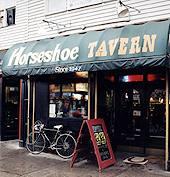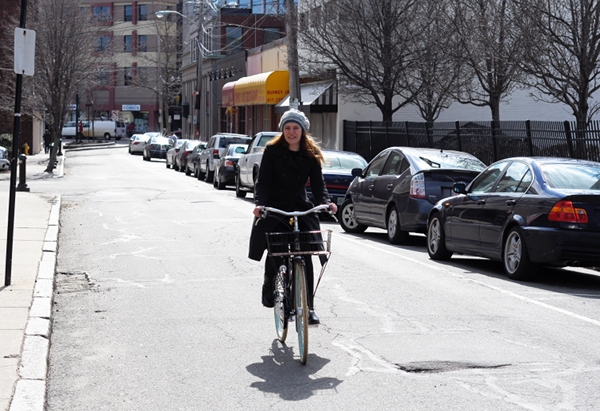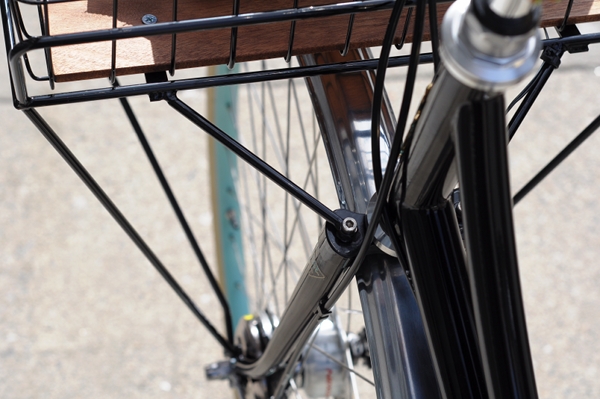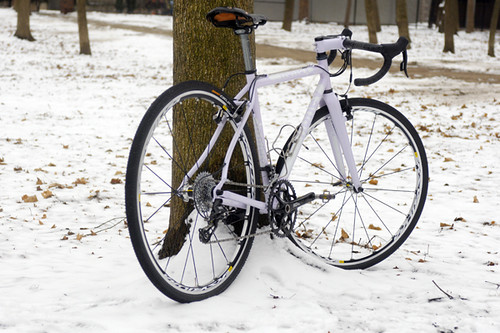
(Photo: Mount Agero, seen here in the afternoon after the morning fog cleared away.)
It has been several years since I've used a guide for clmbing.
My experiences with guides have always been very professional, educational and satisfying. But these experiences were all in the United States. And the guides spoke the same language I did.
Last week in Spain, in the Picos de Europa, I didn't know whether I could expect the same sort of experience.
I had never planned on climbing there. The Picos were not a part of my climbing dreams. Until recently I'd never heard of these mountains. They are largely unknown to American climbers.
Oddly enough, my wife Robin made it happen. She'd planned a family vacation in Northwest Spain for the whole family: the two of us plus the kids. I was passively, notionally involved but really I left the details to her. She picked the locations in Galicia where we'd spend the first week of our trip. As she looked into Asturias and learned about the Picos de Europa, she knew we'd love the place and decided we should spend several days in the region. She wanted us to go hiking in the area as a foursome, which we did. (It is a hiker's paradise.) But she also planned things so I could take one day apart from the family and go rock climbing on my own. I don't know many non-climbing spouses who would do something like that. That's just the kind of generous person she is!
In the months leading up to the trip, I looked into finding a climbing partner in the Picos. There weren't many resources (in English) for finding a climbing partner. I did some web searches but did not stumble on any guide services with English-language web sites. I posted queries on both rockclimbing.com and mountainproject forums but got no responses, either about potential partners or a guide.
Eventually I decided I would just find a way to hire someone. This would be simpler-- I wouldn't have to bring much, just my harness, shoes and helmet. It was unlikely I'd find a partner for just the one day any other way. I asked my old partner Greg about the guides I knew he'd used when he was in Chamonix. He put me in touch with a reputable guide, an American that he'd used over in Europe. Greg's guide wasn't planning on being anywhere near the Picos in August but he put me in touch with Kjeld Andreasen, who co-founded a service called ATG out there that offers guiding not just for climbing, but also caving, rafting, mountain biking, and other adventure sports.
Kjeld immediately contacted me by email and when I told him I was looking for long mountain trad routes in the 5.9 to 5.10 range he said, in perfect English, that he knew exactly what I was looking for and that I would love the Picos.
As the appointed day approached my biggest worry was the weather. We'd had a mix of rainy and sunny days in Galicia and temperatures that were a little cool for August. On the day before my planned climbing day, we'd arrived at our hotel in Arenas de Cabrales to find overcast skies and mountains shrouded in a damp fog. We'd gone ahead and done an afternoon hike with the kids despite the weather, and been immediately amazed at the beauty of these mountains. We were instantly in love with the Picos, even in the fog.
That night I spoke to Kjeld. He had hoped to take me out personally, but he had bad news: he had just broken his ankle in a motorcycle race.
But I was not to worry, he told me. He had set me up with one of ATG's guides, Fernando Zamora. He said Fernando spoke English well, and that they had talked about good routes for me. Fernando knew what I was looking for and had a few options in mind, one of which was easier, and the other more difficult, depending on how “eager” and “enthusiastic” I was. Then Kjeld chuckled. I wasn’t sure what to make of the chuckle.
I told him I was well known for my enthusiasm.
The next day dawned sunny and bright, although with fog still surrounding many peaks. It was much clearer than the day before, giving Robin and me our first real look at the full beauty of the Picos. We drove to the appointed meeting place in Potes and marveled at the giant formations so close to us on either side of the road. The forecast still called for potential rain in the afternoon, but I was hopeful I could get a good day in. (We learned over the course of our stay that the weather forecast is pretty meaningless in the Picos.)
We met up with Fernando at 9 a.m. in a parking lot in the middle of Potes, where we learned his English wasn’t really so hot. But as Robin told him (in her broken Spanish), his English was surely much better than my Spanish! I’m terrible with languages. After a week in Spain I could still barely order coffee or beer.
Fernando told us in a mixture of Spanish and English that he thought we’d have a good day, but that we should do routes not too far up in elevation, because of the potential for bad weather later in the afternoon. It seemed very reasonable to me. He told Robin to expect us back in the lot about 4 p.m., and then we were off.
On the way to the climb, Fernando and I communicated to the extent we could about my climbing history. I realized after a few questions that he was trying to figure out what I was capable of. He asked me how long I’d been climbing (5 years), and if I had any experience with long mountain routes (a little but not much). Eventually, and I don’t know how this happened, he got the idea that I knew what I was doing and that he could take a chance on me. He told me he’d been planning to take me up a very nice, long route that is pretty easy, but that he’d changed his mind and decided to take me up a similarly long route that is even nicer, but also harder. He said it was rated 6a, which I later learned is considered equivalent to the American/YDS grade of 5.10a. At the time, I didn’t know what 6a meant, but I told him I was game to try whatever route he wanted.
We drove about 8 kilometers north out of Potes, to where Route 621 crosses the Deva river and the first sign for the town of Lebena appears. Suddenly Fernando turned to me and said “This car, it is good.”
Before I had time to wonder why he was telling me this, he turned off onto an extremely steep, narrow road that headed upward towards a large mountain (which I later learned is called Agero) sitting directly above Lebena. The pavement soon ended, and the road turned to dirt. It seemed our first thrills were going to come on the drive up. After a week in Spain I’d become accustomed to driving on narrow, curvy roads, but this one was crazy, barely wider than his small pickup, twisting and turning past tiny farms and houses. I couldn’t imagine driving on this road myself, and it’s unlikely I could ever find my way again on it even if I were willing to. Fernando made several sudden turns at various unmarked tiny intersections, going ever upward towards the mountain. Suddenly a gravel parking area, big enough for two cars, appeared. He gingerly found a way to squeeze his truck into the second space.
We had arrived. Fernando told me that by braving this road we’d saved ourselves an hour of hiking.

(Photo: Agero upon our arrival at the base, shrouded in fog.)
He instructed me to put my harness on at the truck. I had brought a small Camelback pack with water and a little food but Fernando told me he preferred it if I left all that behind. He handed me an even smaller water pack (cyclist size) that he wished me to carry.
For his part, he carried a rack of only 6 cams (Camalots .4 through # 2, plus a yellow Alien) and a similar number of quick draws/shoulder-length slings. That’s it. Nothing else. No nuts, nada. A couple locking carabiners. I have long known guides to carry less gear than the rest of us, but still I was surprised at just how little Fernando was bringing.
The mountain was right across the road from the tiny parking area. I thought we had arrived at the base of our climb, and I tried to engage Fernando in a discussion about belay commands. But he told me this wasn’t necessary, since we weren’t using the ropes just yet. Then he started up the rock, and I realized there was a cable attached to the rock heading upwards and to the right. This approach pitch was apparently going to be my first via ferrata. Fernando attached himself to the cable with a sling; I went ahead and used my Metolius PAS, with Fernando’s approval. It was hardly necessary, but there were a few exposed spots. Periodically, as he would throughout the day, he would ask me if I was "good," to make sure I was comfortable with whatever we were doing.

(Photo: Ascending the via ferrata approach pitch.)
After the via ferrata pitch we headed left for another approach pitch, this one probably third class, without any cable or need for one. It follows a faint trail up a dirt path with occasional rocks to the main wall of the formation.
We were already high above the towns in the valley, and finally ready for the first real pitch of climbing, on what I later learned is a classic 9-pitch (if you don’t count the two approach pitches) route called Espolon del Agero ("Agero Spur").
Fernando flaked the ropes (9 mm doubles) and talked to me about belay commands. He didn’t use the terminology I would use, but I understood what he wanted. He told me when he reached the end of the climbing he would say "open the system," and that I should not climb until he said "you go up!" In an effort to help his future business with English speakers, I tried to explain the terms "on belay" and "off belay," but I don’t think much of what I said got through. It didn’t matter. I knew what he meant and the system was the one I was comfortable with.

(Photo: At the crux of pitch one.)
He climbed the first pitch, telling me as he left that it is the hardest one on the route. He didn’t seem concerned with whether I could belay him properly. I soon learned this was because he didn’t really need much of a belay. He placed hardly any gear. In fact he probably soloed at least the first 60 feet, passing what I later found to be the first crux of the pitch without a single piece. Eventually he put in a piece and clipped a fixed piton (this route has lots of old pitons) before telling me he had reached the hardest section. Then he was quickly through it and it was my turn.

(Photo: Climbing pitch one.)
I was nervous. This was my first time climbing on limestone, and I didn’t know how it would feel. I also didn’t know what kind of hard climbing to expect. If we were talking about overhangs or a few thin face moves, I’d be right at home. If, on the other hand, I was going to be expected to climb a jam-crack for 100 feet or do a hard slab-climbing pitch, I could end up humiliated.
I needn’t have worried. The climbing felt very familiar to me.
The rock was featured with cracks, mostly vertical in orientation, but horizontal often enough for my taste. Lots of pockets as well. And the way the rock was formed was very Gunks-like in one respect: incredibly positive edges tended to form along the cracks. A steep face might appear impossible, but then a crack would turn out to provide the most awesome jug, sidepull or undercling. And I loved the texture of the limestone. It was so grippy, I felt I could put my toe on the smallest dimple; even rounded corners could form positive handholds.
I got through a couple 5.8-ish cruxy moments in the first pitch, shaking my head that Fernando had climbed through this same territory without placing any gear. Then I confronted the real crux of the pitch, a steep corner/slot with a finger crack at the back. I stood there, thinking of it as a test. If I could do these moves, Fernando would know I could do the whole climb. If I couldn‘t do them, what would happen? Would he try to pull me through it? Would we bail off the route and do something easier? Either of those possibilities was very unappealing.
The crack gave good finger locks. I placed the fingers of my right hand in one direction, my left in the other. Pulling outward in opposite directions (a move known as a Gaston but which I always think of as "forcing open an elevator"), I committed to moving my feet up, then got a better hold with my left hand. It was still steep, but then the holds improved. The crux moves were strenuous but the sequence was blissfully short. I got through it just fine.
When I arrived at the belay Fernando seemed overjoyed.
“You!” he said. “You are a professional! You are a very good climber!”
I was very happy, too. I had passed the test. I was also impressed at Fernando’s trust in me, a total stranger. He knew this was the type of climb I wanted, but he didn’t know ahead of time if it would work out well, or instead turn into an epic with a whiny, incapable client. He took a chance on me. He could easily have taken me up something easier and I wouldn’t have complained. Instead he gave me precisely what I’d asked for, a long route in the mountains at the upper limit of what I could do.
After this first pitch I relaxed completely. We were going to have a very good day.

(Photo: Fernando atop pitch one, with the fog already clearing.)
The rest of the climb unfolded smoothly.
Pitch two was an easier pitch up unremarkable territory.
Pitch three started out easy, but ended in another steep corner similar in size and difficulty to the one on the first pitch.

(Photo: Fernando shooting a photo of me from the end of the crux corner on pitch three.)
As we got higher, the day got clearer and hotter, and the peak, which was shrouded in fog at the start of our day, emerged into the bright sunshine.

(Photo: Emerging from the steep crux corner on pitch three.)
Despite what Fernando told me about the difficulties of pitch one, I later learned that pitches four and five are generally considered the crux 6a pitches of the route.

(Photo: Heading up the wide stemming section on pitch four.)
Pitch four is short, ascending a technical stem corner using wide-split legs. I thought it was really fun, but I didn’t think it was actually terribly demanding. I hate to be that guy who says "in the Gunks this wouldn’t be considered so hard," but in this one instance I am tempted. And let’s face it, I am that guy. I wanted to bring Fernando to the Trapps and have him climb Ants’ Line (5.9) or maybe Simple Stuff (5.10a, which I’ve never done), and ask him how he thinks they compare.

(Photo: Standing at the belay for pitch four.)
Pitch five was the actual crux for me, and on this particular day it seems it was for Fernando too. He did the early hard bit, ascending an arching crack which provides great hands but no footholds at all. Then he moved to the right onto the steep face and got to what looked like a committing layback move off a side-pull. He started to move up, grimaced and stepped down a couple times. This was the first time I’d seen him hesitate all day.
Then he called down and apologized, saying he was having trouble because he’d broken his hand a couple weeks before.
I quickly decided he couldn’t possibly mean what he’d just said. There was no way he was climbing on a broken hand. Right? (I figured out later that he believes he strained a tendon.)

(Photo: In the steep, exposed face-climbing on pitch five.)
Eventually he did the move and finished the pitch. It was my turn.
The early moves up the arching crack were tense. There really are no footholds at all for this rising traverse, but the texture of the limestone is so good, I felt my feet were stuck to the wall with glue. And Fernando had really done right by me, placing pro at reasonable intervals for my benefit along the traverse, the one place in the route it actually mattered. After this I got to the steep face, which Fernando had described to me as "impresionante." I didn’t know what he meant when he said it but as I made the moves I realized he'd meant "exposed." I was above a drop of several hundred feet.

(Photo: Belaying pitch five. Above me you can see the curving edge that is followed up and right, with smearing feet.)
I didn’t have any trouble with the sidepull Fernando had struggled with, but the holds above weren’t as good as I hoped they’d be. I still needed to move right and up to finish the pitch, and I suddenly felt for the first time all day that I was about to peel off. I was barely hanging on.
But I had to freeze when Fernando said "stop!"
I looked up, startled, to find he was pointing his camera at me. "Facebook!" he said.
Urg, not right now, I thought. I finished the pitch and the hard stuff was over.

(Photo: Belaying pitch six or seven.)
After two more easy pitches, the 5th class climbing was over as far as Fernando was concerned. For two full rope lengths to the top, Fernando instructed me to feed him the rope but told me not to put it through my belay device while he was climbing. He put me on some kind of body belay when I climbed each of these pitches behind him. Although he had climbed them without the benefit of a belay, I thought there were a handful of fifth class moves in these two pitches. Some people might not feel comfortable without a better belay, not to mention an anchor. I don’t know if the AMGA would have approved of Fernando’s approach to these final pitches, but I felt secure enough.
At the top we enjoyed the splendid view on what had turned into a gorgeous, sunny day. Fernando told me we’d finished more quickly than he’d expected by an hour, and he confirmed my suspicion that he’d really rolled the dice on me at the beginning. He said he’d normally never take someone on this route on his first day with that person. I guess something in our conversation had made him understand that I wouldn’t be a disaster for him, and that I’d really enjoy this route. I’m really grateful to both Fernando and Kjeld for giving me such a fine day in the mountains.





(Photos: On top of Agero.)
As I enjoyed the walk-off down the beautiful gully next to Agero I wondered if I’ll ever get back to the Picos. Before we left the area I bought the Adrados guidebook (which is in Spanish), a huge tome which contains select highlights of the region. I purchased it as both a souvenir and a motivator. If I look over it enough maybe I’ll stay motivated and find a way to come back some day.
And by then maybe I’ll learn how to order a beer in Spanish with confidence.


(Photos: Heading down.)

 Albion, Indiana ~ January 20, ..
Albion, Indiana ~ January 20, ..
 Albion, Indiana ~ January 20, ..
Albion, Indiana ~ January 20, ..























 One discovery I have made in my attempts to battle roadbike discomforts is a product called DZnuts. This is a chamois cream that promises to "protect your junk" from chafing, irritation and infections that can occur during long distance cycling on a roadbike. This stuff is sold in most bike shops, branded as a men's product. So I present it here surrounded by lavender and a cup of herbal tea to indicate that it also works for ladies.
One discovery I have made in my attempts to battle roadbike discomforts is a product called DZnuts. This is a chamois cream that promises to "protect your junk" from chafing, irritation and infections that can occur during long distance cycling on a roadbike. This stuff is sold in most bike shops, branded as a men's product. So I present it here surrounded by lavender and a cup of herbal tea to indicate that it also works for ladies.



























